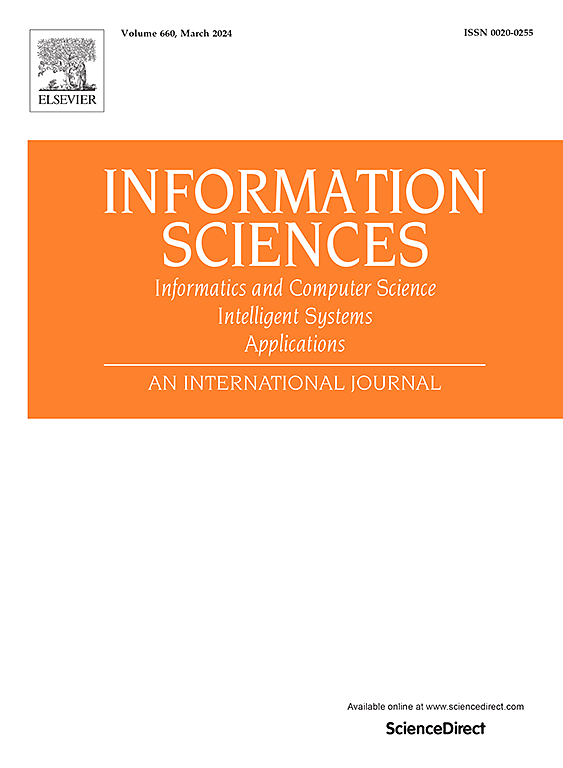Dempster-Shafer证据理论中新焦点要素的选择规则
IF 6.8
1区 计算机科学
0 COMPUTER SCIENCE, INFORMATION SYSTEMS
引用次数: 0
摘要
我们在邓普斯特-谢弗证据理论的框架内考虑选择新的焦点要素来补充现有证据的问题。我们提出并分析了一些选择规则来解决这一问题,假设最终目标是增加证据,使新证据体的皮格尼格变换尽可能地代表证据的潜在分布。鉴于目前缺乏选择规则,我们使用下一个焦点元素的随机选择作为基准,然后我们形式化了一些可能的选择规则,其中一些规则基于不确定性的最大化或最小化。然后,我们使用蒙特卡罗模拟将所提出的选择规则与随机选择表示的基准进行比较。数值结果表明,平衡识别框架元素在焦点单元集中出现次数的选择规则在平均和最坏情况下都优于其他规则,因此可以合理地作为新焦点单元选择的指导规则。本文章由计算机程序翻译,如有差异,请以英文原文为准。
Selection rules for new focal elements in the Dempster-Shafer evidence theory
We consider the problem of choosing new focal elements to supplement the given evidence within the framework of the Dempster-Shafer evidence theory. We propose and analyze some selection rules to solve this problem under the assumption that the final goal is to add evidence to make the pignistic transformation of the new body of evidence as representative as possible of the underlying distribution of evidence. Given the current absence of selection rules, we used the random choice of the next focal element as a benchmark, and then we formalized some possible selection rules, some of them based on the maximization or minimization of uncertainty. Then, we used a Monte Carlo simulation to compare the proposed selection rules with the benchmark represented by the random selection. Numerical results show that the selection rule that balances the occurrence of elements of the frame of discernment within the set of focal elements outperforms the others, on average, as well as in a worst-case scenario, and consequently may reasonably serve as a guiding rule for the selection of new focal elements.
求助全文
通过发布文献求助,成功后即可免费获取论文全文。
去求助
来源期刊

Information Sciences
工程技术-计算机:信息系统
CiteScore
14.00
自引率
17.30%
发文量
1322
审稿时长
10.4 months
期刊介绍:
Informatics and Computer Science Intelligent Systems Applications is an esteemed international journal that focuses on publishing original and creative research findings in the field of information sciences. We also feature a limited number of timely tutorial and surveying contributions.
Our journal aims to cater to a diverse audience, including researchers, developers, managers, strategic planners, graduate students, and anyone interested in staying up-to-date with cutting-edge research in information science, knowledge engineering, and intelligent systems. While readers are expected to share a common interest in information science, they come from varying backgrounds such as engineering, mathematics, statistics, physics, computer science, cell biology, molecular biology, management science, cognitive science, neurobiology, behavioral sciences, and biochemistry.
 求助内容:
求助内容: 应助结果提醒方式:
应助结果提醒方式:


